Historically, Australia’s Aboriginal and Torres Strait Islander people and their communities haven’t been appropriately supported when it comes to managing their experiences of grief over their life experiences – often ones of suffering at the hands of the non-Indigenous. SASCHA COSTIGAN shares the story of Red Dust Healing, a program achieving powerful results within communities throughout Australia.
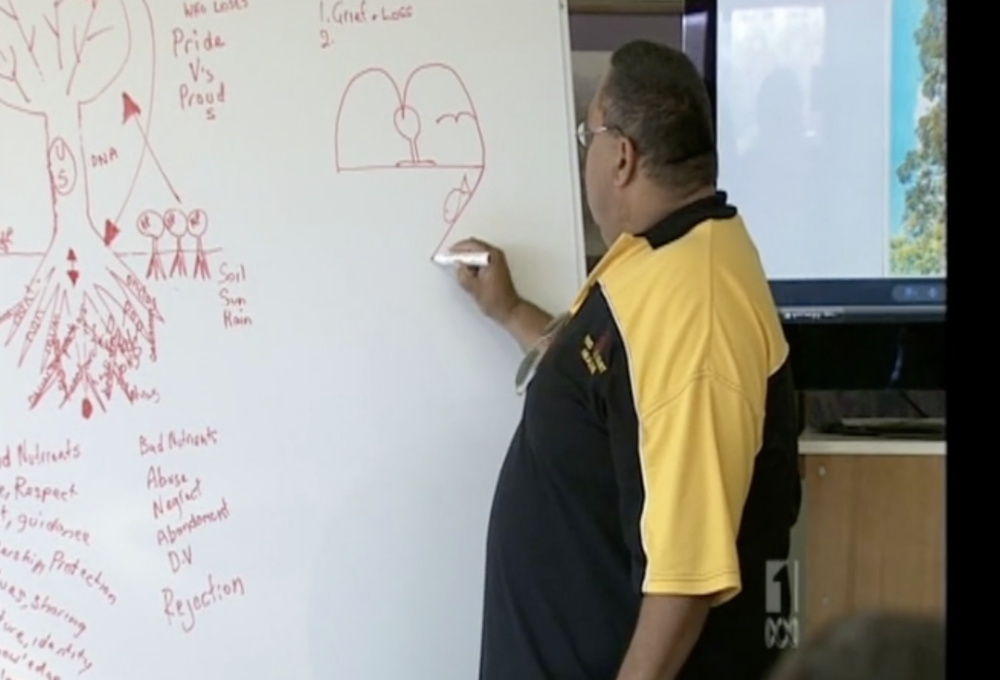
Red Dust Healing is a specific cultural healing program, written from an Indigenous perspective, and targeted at Indigenous as well as non-Indigenous men, women and families. It addresses family and community violence, justice and juvenile justice, stolen generations, suicide, rejection, addictions, grief and loss and mental health.
The program encompasses visual holistic learning modules, linking Indigenous and non-Indigenous cultures.
“To instil resilience and to restore families, that is what Red Dust Healing is about for me,” explains founder and key facilitator Uncle Tom Powell, a Warramunga man of the Wiradjuri Nation.
“It’s about restoring that family structure because it’s been broken down, picked apart, through the model of oppression.”
Today, Red Dust Healing has been delivered to more than 17,000 people from more than 400 communities, in Australia and overseas, and it has worked with bushfire victims of the South Coast 2019/2020 summer fires.
“When the dust settles on our lives, all we get to keep and take with us is our dignity, our integrity and the love and respect we share with people,” Uncle Tom says, in words that have become an important reflection on what the Red Dust Healing program means to both him and those whose lives have been improved because of it.
The Red Dust Healing program only works with communities that have requested its assistance.
A Ripple Effect
A recent evaluation says: “It has grown rapidly due to strong community support from Aboriginal and Torres Strait Islander men and women who have experienced the benefits of the program either in their own lives or recognised profound changes in the lives of family members.
“By providing RDH participants with a range of culturally relevant and easily accessible tools, the program encourages participants to connect with themselves to recognise and confront problems, hurt and anger in their lives, stemming primarily from rejection and grief.
“It also supports participants to recognise and own both the decisions they have made in their lives and the outcomes of those decisions. RDH supports participants to heal from within, by addressing family and personal relationships and what may have been lifelong patterns of violence, abuse and neglect.
“The RDH program is having not only a positive impact on the lives of a great many participants but also subsequent benefits for their families, communities, clients and workplaces.”
This further impact is referred to as its ‘ripple effect’.
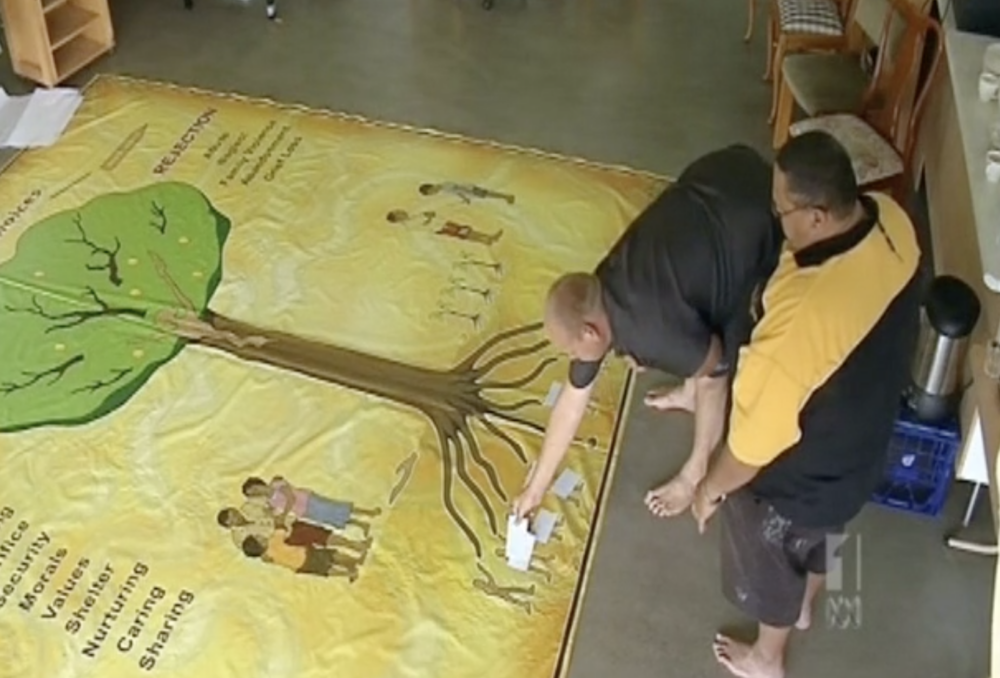
photo courtesy of ABC’s Message Stick
The Red Dust Healing program is delivered in a relaxed workshop format. It usually starts with a one day workshop which can be expanded into a three day workshop for those who would like to do more.
The one-day workshop provides participants with a context for the reasons for rejection and grief and loss as well as an introduction to a set of visual tools.
Uncle Tom uses these visual tools – strong, simple but effective culturally. They do not require literacy to understand but have power and deep meaning. So they are accessible to all, targeting ‘the heart not the head’.
Uncle Tom at the helm of Red Dust Healing
The Tree
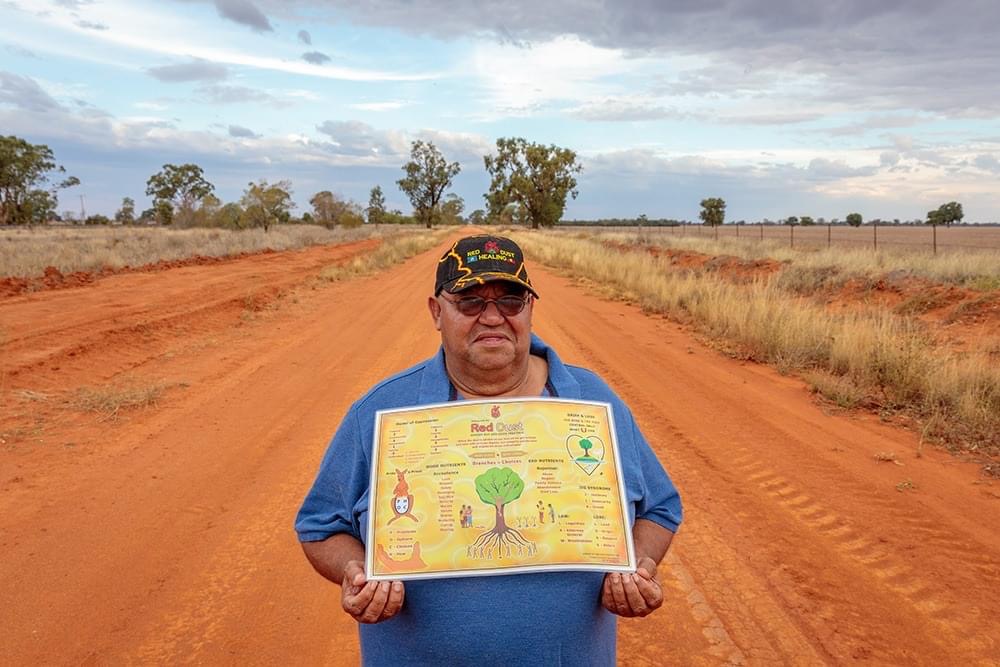
A key image is The Tree, which Uncle Tom explains in this video. (Please use Password: Tools2020 to view this. Please also note that the material is the intellectual property of Red Dust Healing Pty Ltd. It must not be used or reproduced without prior permission.)
The scar in the tree signifies our loved ones when they die. The scar remains on the tree for the entirety of the tree’s life, resembling the fact that when we lose somebody that scar will always remain.
“We did not ask for it. No-one has ever said “abuse me”, “neglect me”, “belt me”, or “abandon me”, nor have they asked someone to “die on me”. Grief and loss is a major part of rejection. We can tap into this pain in order to prevent our big tree feeding our root system with rejection, instead choosing acceptance to nourish it and our saplings,” Uncle Tom explains.
Other images are used as well. These include images of birds, fish and the pouch. The difference between ‘lore’ and ‘law’ are explored.
The JIG (Jealousy, Insecurity, Greed) syndrome is also workshopped. Uncle Tom explains: “What other people think of you is NONE OF YOUR BUSINESS. What other people write about you on ‘Disgrace-book’ is none of your business. If you retaliate on Facebook and write something back out of hurt or revenge, you have come down to their level. We are better than that.
“When people point the finger at you or blame others it is usually because they are jealous or are trying to deflect away from their own hurt feelings and pride. They probably don’t like themselves and so how are they ever going to be able to like others?
“There are three fingers pointing directly back at their own heart telling them and us they are insecure. Greed is not just about money, it is also about power and control – like a pelican preying on a fish. Examples of this in today’s society relate to domestic violence or bullying in the office or at school.”
An individualised session on a mat is also used, and it is an important part of the process.
“Yes, I’ve been on the mat,” explains one participant.
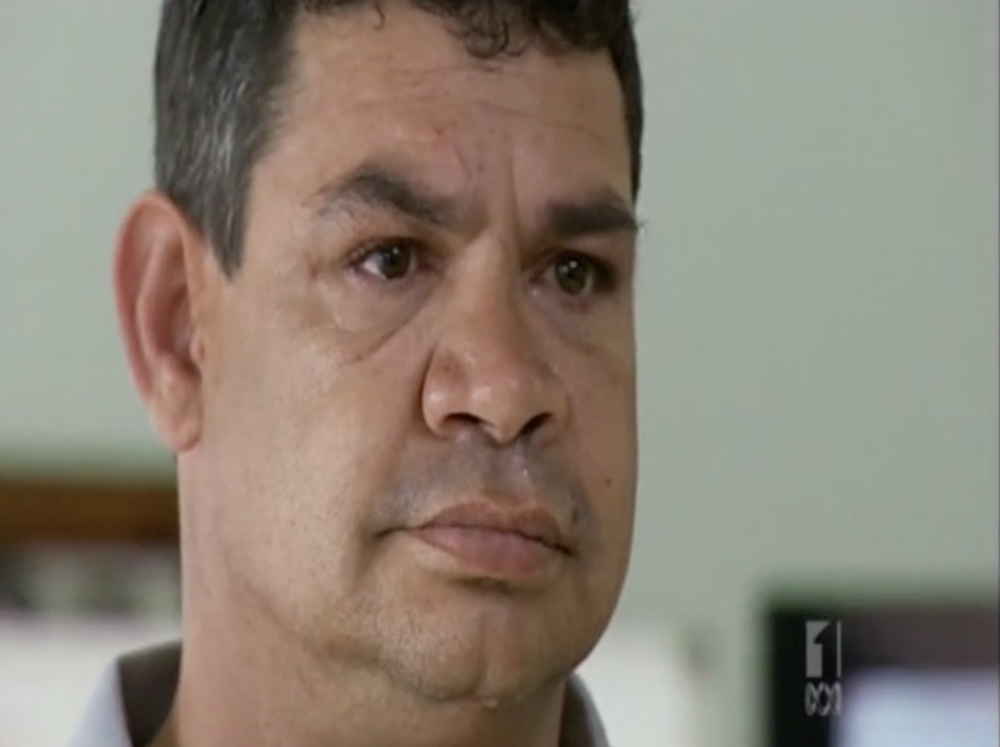
“It’s very emotional, the mat. But that’s where you get to step out of yourself and see your life differently. Once I got on the mat, that opened my eyes to a lot of things. I saw my own life and how I can improve and what things affect it.”
Participants learn that while rejection and loss in their life may hurt, it is ‘not their fault’. At the same time, they are encouraged to understand that the choices that they make in life have an impact on those around them – specifically their children, nieces, nephews and grandchildren. As one informant noted, the one-day workshop ‘whets the appetite’ and consequently many participants then choose to attend the three-day program.
The three-day workshop provides participants with the opportunity to consider individual issues in more depth. It encourages personal insights and a journey of personal growth and wellbeing through a series of group, paired and individual sessions.
It encourages participants to confront and deal with the problems of hurt, anger, rejection and grief and loss in their lives that are the results of intergenerational disadvantage and the persistent effects of trauma.
The program draws on traditional Aboriginal and Torres Strait Islander culture and lore and adheres to cultural protocols and cultural knowledge.
Red Dust Healing promotes follow up by linking participants with relevant Aboriginal and Torres Strait Islander services, mentors and at times, buddies. In some instances, the key facilitator of the program follow-ups with participants via phone and/or face-to-face meetings as an informal support mechanism.
You’re Somebody’s Someone
In Australia, we have the highest rate of suicide in the world amongst First Nations groups, with statistics demonstrating death caused by suicide to be almost twice as common as that of other Australians. In 2017, Uncle Tom introduced You’re Somebody’s Someone, to address this problem.
The premise of You’re Somebody’s Someone is to remind people that you’re somebody’s Mum, Dad, Nan, Pop, Wife, Husband, Sister, Brother, Aunt, Uncle, Niece, Nephew, Cousin, Friend – the list goes on. It is not just for those directly impacted by suicide in their lives holding the hurt, but also to prevent this tragedy from occurring. It is an early educational prevention model.
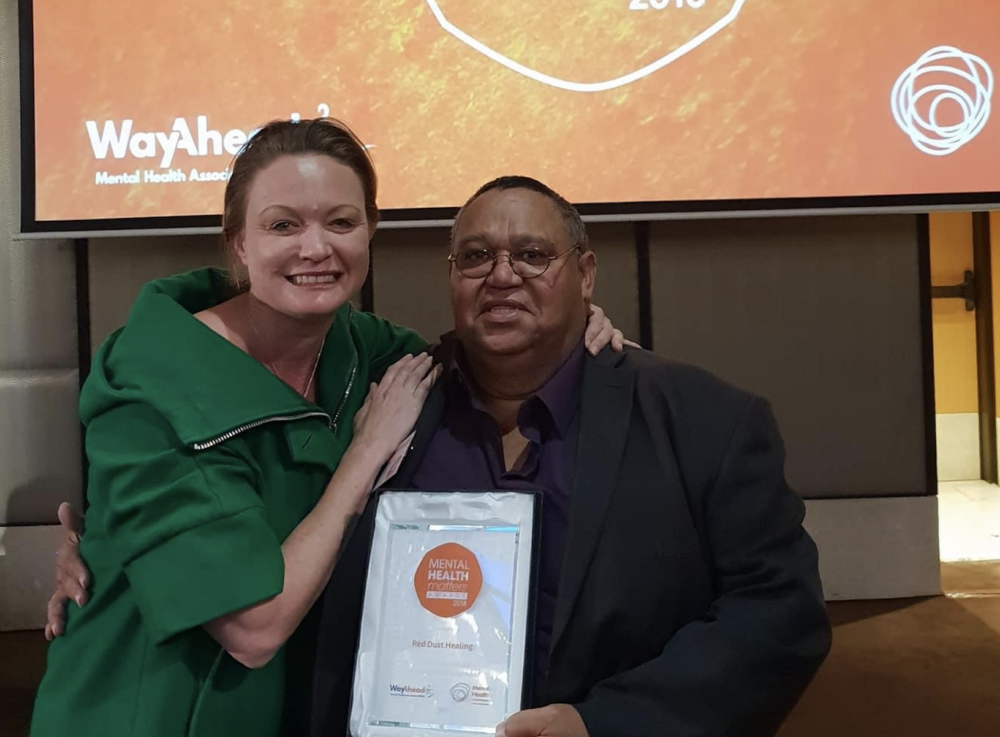
About Uncle Tom Powell
Uncle Tom Powell, is the Founder of Red Dust Healing. He is a proud Warramunga man from the Wiradjuri Nation, born and bred in Narromine in the Central West of NSW.
After leaving school in year 10, Tom went on to work with his father in the family earthmoving and road construction business, established by Tom’s father in 1973. In 1994, Tom enrolled in a community welfare course at night at Dubbo TAFE. Believing that he had had a fortunate upbringing, Tom was particularly keen to work with and support young Aboriginal people. Before finishing his course, Tom was offered a job with the NSW Department of Juvenile Justice as an Aboriginal Programs Officer both in Taree and Coffs Harbour on the mid-north coast of NSW. He spent the next fourteen years working there.
Tom left the Department and initiated the Red Dust Healing program in 2007.

Resources
Here is the recent 2018 evaluation of The Red Dust Healing Program, prepared by Jo Thompson Consulting, for Caritas Australia, the aid and development agency of the Catholic Church which worked in partnership with the program between 2011 and today.
Find out more about Red Dust Healing: Here
ABC – MessageStick produced a feature about Red Dust Healing in 2013. It is still relevant today.
Find it at:
https://vimeo.com/84833896
Password: caritas
For more information on suicide among Australia’s Aboriginal and Torres Strait Islander Peoples, read this Australian Institute of Health and Welfare Report.
